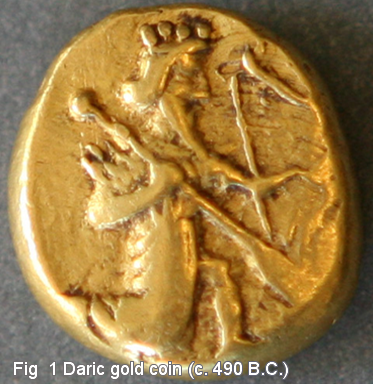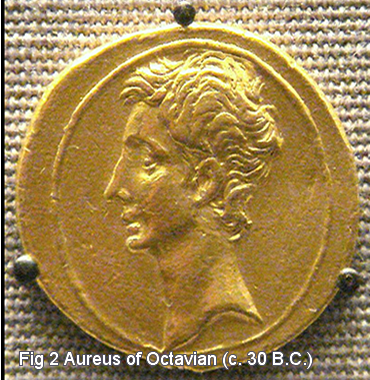History of Gold
Gold should be the first element that humans recognized as a metal in the Mile Stone Age about 8000 B.C. In which area of the earth is Gold produced first difficult to nominate, but base on the ancient evidences can make some comment as following:
The Sumer civilization of southern Iraq (Persia) in 4000 - 3000 B.C. uses gold to create a wide range of jewellery and , often using sophisticated and varied styles still worn today and other product. In 1927 Sir Leonard Woolley excavated a royal tomb at the Sumerian capital city of Ur. It contained enough gold and silver objects to show that the technology of gold working had reached very high levels of competence by about 2600 BC. This had been a very rapid revolution: only one site (Tepe Gawra on the Iranian plateau) has yielded worked gold before 3000 BC. This seems to place the origin of gold technology in Iran/Anatolia rather than Egypt. New evidences show that the gold was probably mined in Arisman, Tappeh Sialk and Tappeh Hissar in Iran(Persia) too .The Transylvanian Alps or the Mount Pangaion area in Thrace in Eastern Europe (Bulgarian) are nominated as gold mining recourses to produce gold in this time.
In ca 2700 B.C., gold rings were introduced as means of payment, in about 2500 B.C. Gold jewellery is buried in the Tomb of Djer, king of the First Egyptian Dynasty, at Abydos, Egypt.
About 1500 B.C. ,the massive, gold –bearing of Nubia make Egypt a rich, nation as gold becomes the recognized nation as gold becomes the recognized standard medium of exchange for international trade. The Babylonian Shekel, a coin originally weighing 11.3 grams of gold, becomes a standard unit of measure in the Middle East. It contained a naturally occurring alloy, called electrum that was approximately two-thirds, gold and one-third silver.
About 1350 B.C., the Babylonians begin to use fire assay to test the purity of gold.
At about 520-480 B.C. Darius King of Persia first introduced a reformed currency system, the precise period is debatable. The rate of exchange was 1 Daric (fig 1)(Daric gold coin) = 20 Siglos( Persia Siglos 490-420 B.C. Ancient Silver Coin). It consisted of a Daric of between 8.10-8.50 grams in weight and based on the Babylonian shekel of 8.33 grams. The purity was between 98-99% gold.
About 344 B.C. Alexander the Great brought vast quantities of gold from the Persian Empire to the Greeks
About 50 B.C. Romans begin issuing a gold coin called the Aureus (fig2)


Darius first introduced a reformed currency system at about 520-480, the precise period is debatable. The rate of exchange was 1 Daric = 20 Siglos (Persia Siglos 490-420 B.C. Ancient Silver Coin). It consisted of a Daric of between 8.10-8.50 grams in weight and based on the Babylonian shekel of 8.33 grams. The purity was between 98-99% gold.
In 1284 A.D. Venice introduces the gold Ducat, which soon, becomes the most popular coin in the world and, remains so for more than five centuries In 1511 A.D. King Ferdinand of Spain says to explorers, "Get gold, humanely if you can, but all hazards, get gold, "launching massive expeditions to the newly .discovered lands of the Western Hemisphere.
The production of Gold was not until the discovery of deposits in Brazil so much. After this time, it was a noticeable increase in world gold production. These deposits were exploited from 1725 to about 1800.Since about 1725 gold has been mined on a major scale. Since about 1750 gold has been mined on a major scale on the eastern slopes of the Ural Mountains and in Siberia in Russia.
Gold has been mined in different scale in different countries, 1848 in USA, 1851 in Australia,1886 in New Zealand ,1896 in Canada. The strongest motivation was given to gold production through the discovery of the goldfields of the Witwatersrand in South Africa in 1885.This extremely rich deposit appeared to guarantee steady exploitation far into the future. From about 4000 -3000 B.C. alluvial gold could be fused into larger lumps. The ancient Persia or Egyptians were the first to quarry gold bearing rocks. They extracted the gold from Comminution of gold bearing rocks using wood as heat and reduction material. In 11th century A.D. in Spain, the Romans developed the Amalgamation process for gold production. In the Middle Age, fusion with lead and cupellation were developed further. Water powered also crushing machines were also introduced for pulverizing ore and miners learned to process arsenic-containing gold ores by roasting. The 17th century saw the discovery of separation of gold and silver by nitric acid. In the 19th century Production of gold as a by-product of other metallurgical process was introduced in Germany (Rammelsberg/Harz).In 1863,plattner's method of chlorination was introduced in the USA. Refining by electrolysis was introduced in 1878 and still used for all fine gold of 9995 and 9999 purity. Since 1888, cyanide leaching has permitted economical beneficiation of the Witwatersrand ores. Since 1970, conventional cyanide leaching has been used by the carbon-in-pulp process. Solvent extraction is being investigation as a new method for rapid and effective refining of fine gold.

